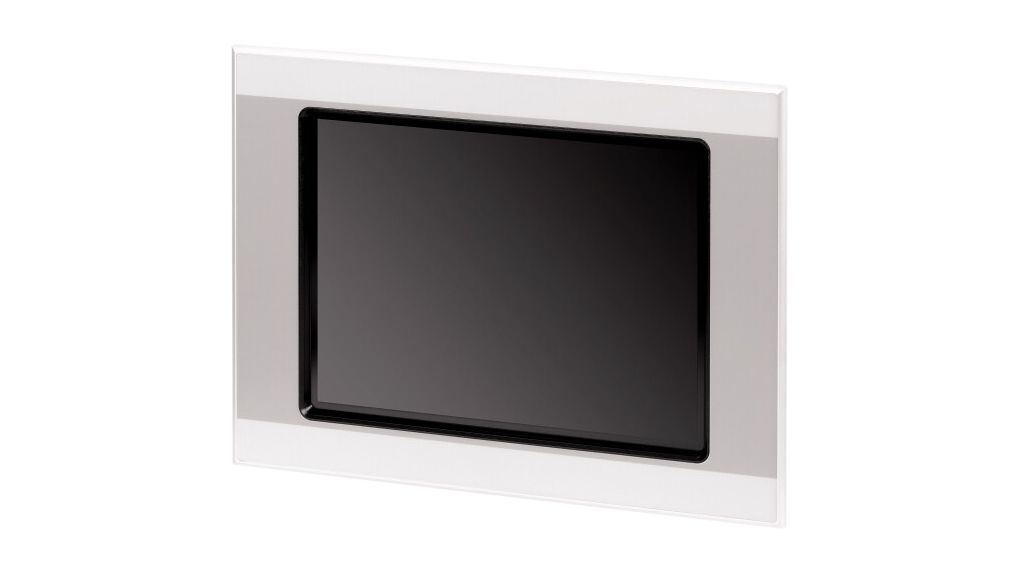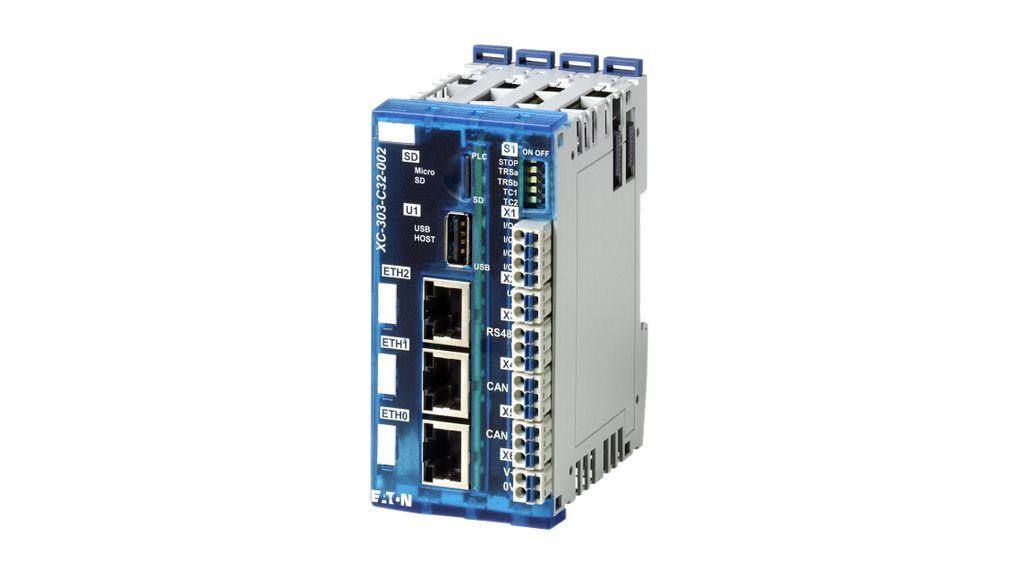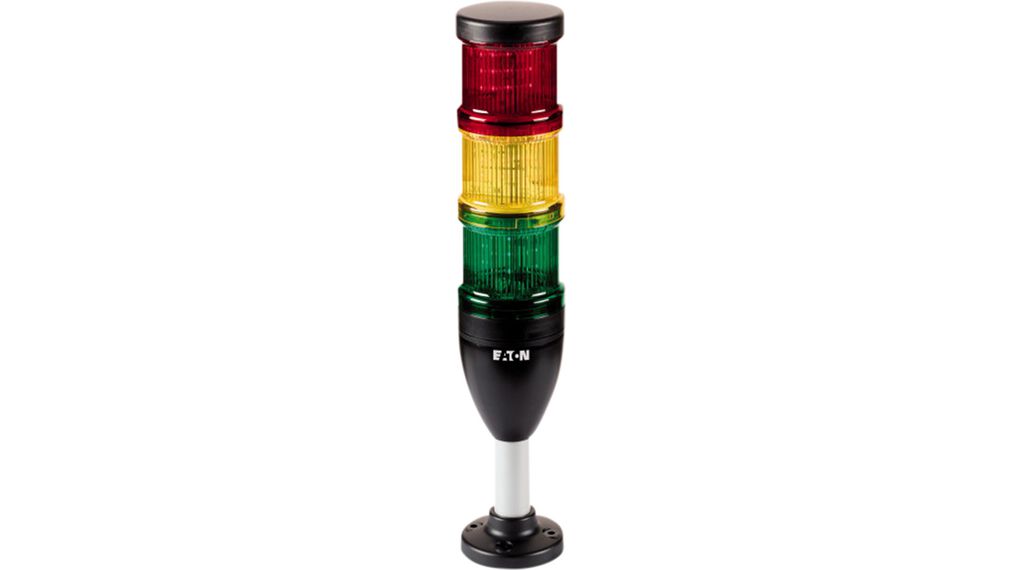Control and communication elements are becoming crucial for smart manufacturing. Digitalisation enables better controlling and operating machines with high-resolution graphics, gesture-based controls and mobile display devices. If you want to make your manufacturing a smart factory of the future, it is crucial to focus on developing industry 4.0.
Panel builders and engineers can share real-time data, insights and alter in design or production thanks to smart manufacturing. Most importantly, they can plan, implement, and design switchgear panels and industrial enclosures.
How does industry 4.0 change manufacturing?
Industry 4.0 provides a significant amount of improvements for your business. Starting from material acquisition, product design, engineering, supply chain management and delivery. Companies can decrease unexpected downtimes and greatly enhance productivity because of load-dependent operation, integrated diagnostics and monitoring, and intuitive controls.
The end-to-end production line process has changed because of industry 4.0. This allow for removing manual interventions and improving streamlining panels wiring and enclosures construction. Now there are SmartWire-DT solutions, the foundation for industry 4.0. The SmartWire-DT eliminates the need for PLC inputs and outputs, allowing for more space in the control panel.
At Eaton, we’ve embraced the digital world and our place in it to rethink innovation. We’re leveraging technology to improve our customer experience and inspiring our employees with digital tools to drive productivity. We’re taking Industry 4.0 head-on, employing artificial intelligence and advanced machinery in our factories and developing technologies to help our customers to do the same. And we’re generating the insights needed for you to make better decisions with more products and services with Internet of Things (IoT) connectivity built-in.
Eaton
Choosing the correct control cabinets
Control cabinets are the go-to locations now to house all the new automation components and systems. Any industrial machinery installation would be incomplete without a control cabinet. In the past, the design and engineering process for industrial enclosures or switchgear cabinets was a time-consuming, manual procedure with numerous bottlenecks in terms of cooperation, communication, and process visibility. Now it is much easier thanks to automation and digitalisation.
Automation & Visualisation
Digitisation and communication are the future. Thanks to the multi-touch technology, mobile display devices, and HMI’s, the entire visualisation can be complete quickly and easily with high-resolution graphics and gesture-based controls. It is crucial to focus on automation to update equipment, improve transparency and productivity.
Production automation software and Human Machine Interface (HMI) have, for example, proven to be critical in the end-to-end optimisation of the manufacturing process. Precision machining and milling of enclosure cases and panels based on digital schematics and visualisations avoids a lot of time-consuming, manual operations and allows for more complicated cuts and assemblies.
Predictive maintenance of equipment and monitoring systems is one of the main advantages your factory can gain. Thanks to the possibility of connecting physically with digital, engineers and the workforce can collect data and optimise power use.
HMI vs HMI + PLC
There are no significant differences between HMIs and HMI + PLC. HMI are systems that work in conjunction with PLC (Programmable Logic Control). A PLC is utilised in most modern control systems to regulate motors, pumps, valves, and other process equipment. Process personnel interact with the PLC control system through computer-based HMI products. When designing cabinets, the option for an HMI+PLC combo offers better flexibility options.
Both HMI and HMI PLC have outstanding graphics performances and make it possible to integrate multimedia such as PDF, video and web content. Some of the HMI PLCs have the same ease of use as smartphones. But just like basic HMIs, these devices enable the presentation of extremely responsive, state-of-the-art user interfaces and the integration of multimedia elements such as video, PDF, and online contents into visualisations by combining high performance with strong graphics processing units.
In the topic of applications, The HMI and HMI PLC lines of devices are utilised in various sectors. But, as pointed by Eaton, they are especially well-suited to the following applications:
- Industrial manufacturing
- System engineering
- Mechanical engineering
- Renewable sources of energy
- Process industry hazardous applications
- Marine
Recommended products
XV series HMI touch panels, EATON
Visualisation XV portfolio of HMI solutions offers smooth operation with numerous communication connections via Ethernet, CANopen, Profibus or serial protocols. High-resolution and infrared touch are combined with a smart front panel design that is made of resistant laminated safety glass materials to ensure robust protection and user-friendly operation.

XC series PLC CPU modules, EATON
These compact, high performance and intelligent XC series modular PLC CPUs, including the latest EASY4 PLCs, can perform a wide range of functions that can be modularly expanded via the I/O systems such as XN300 series. EATON’s innovative PLC I/O systems enable the implementation of customised solutions ideal for automation panel building environments where compact design is an advantage, and with Ethernet interface accessing varied networks, Industry 4.0 system concepts can be easily designed.

XN300/XN322 series PLC expansion modules, EATON
PLC CPUs modules are compact and modular systems with a wide range of functions and variants in high channel density control panels. The I/Os modules offer practical connections to reduce costs and provide optimum system solutions in the smallest possible space to complement the HMI/PLC series to create an IIOT system solution for most complex applications.

Controlling & Signalling
Control panels to work properly consist of certain parts, such as power circuits or control circuits that provide signals and complement other input devices. These important gadgets are manufactured to perfection. According to NEC, circuits’ maximum power potential limit is 100VA. As a result of the 100VA maximum capability requirement, Class 2 power sources typically have lower current capability than non-Class 2 power sources.
Design plays a significantly important role in controlling and signalling. That is why RMQ compact solutions are stylish, sturdy, and practical. Eaton is an example of a brand that listens to its consumers. For instance, customers asked about slim and sleek designs and their products look that way.
Regarding industrial standards, RMQ compact solutions are perfect for applications requiring protection from dirt or liquids. These devices have high degrees of security in the front (IP69K) and at the back (IP65). They can be installed directly in woodworking equipment and machining centres without any other enclosures.
Pushbuttons
The main purpose of 4-sided planers is to secure and clamp the tools used to process hardwood beams and mouldings longitudinally. These clamping systems allow users to change tools swiftly, and an illuminated pushbutton enables them to control, lock, and release the right spindles.
This pushbutton positioning should be directly in the machine area, which necessitated a degree of protection of at least IP54 in the back to protect it from dust. In addition, some of the RMQ compact solution range of items (with an IP65 rating) can be installed almost anywhere. As Eaton ensures, ‘the customer can decide where exactly they want to locate the pushbutton’.
Connected indicators and pushbuttons are even more important for data gathering and diagnostic information in today’s digital environment, where touch panels are the norm. Furthermore, they must be simple to connect into your IT network.

SL4/SL7 series signal towers, EATON
The SL7 and SL4 signal towers are bright, loud, and durable, making it simple to monitor and indicate the status of your machines and systems. The signal towers consistently show working situations even in poor lighting circumstances thanks to the use of high-performance LEDs and powerful acoustic modules. Due to their high degree of protection (IP66), it offers ideal solutions for challenging environments and or in outdoor applications.
Safety standards
Many criteria must be followed to ensure a safe construction of machinery control panels. Investing in a diverse range of safe, dependable low-voltage electrical distribution solutions help ensure safety. Circuit breakers and busses, as well as panel boards, switchboards and enclosures have to be installed properly. For example, it is now necessary to perform a heat calculation and draw out a heat balance before installing the switchgear.
Moreover, there are delimitations for the installations of electrical equipment. The manufacturer must ensure that the control panel is as electrically safe as feasible. It means that the most recent standards must be followed to assure functional safety, and design principles based on standardised circuits make implementation much easier.
The relevant standard is IEC 60204-1 since 2016. That statement can be found in applicable directives for the European market. If additional risks occur during the risk analysis that the manufacturer believes are not addressed by IEC 60204-1, IEC 61439-1/-2 and, if necessary, other standards may be used as design guidance.
Communication standards
It is crucial to adapt to the right communication standards to be adequately connected, like OPC UA, the choice protocol for cloud computing and machine-to-machine communication. The OPC UA standard can be supported by HMI PLC devices and conveniently connected machines. When combined with visualisation software, the corresponding units are merely used as HMI devices (for example, GALILEO from Eaton).
Size
Often the big issue that automation system designers meet is the size of the control panel enclosure. When evaluating the measurements of each outer panel, however, you can characterise the enclosure in terms of length and width. Additionally, it would be good to know the size of the ventilation systems and cable holes. Every dimension matters and they differ from one electrical enclosure to the next. Eaton offers devices in various designs and sizes (up to 15 inches long).
Sustainable control panels
Industry 4.0 is driven by the ecosystem. It is important to seek the right materials, like cutting-edge polymer materials or composites. That way, companies can improve product efficiency, durability, and recyclability. The tremendous increase in connected devices and sensors and the data and insights they generate help with the environment. Modern devices allow preserving resources, ensure reliable access to energy, and enable safer living and working environments.
Industry 4.0 technologies play a dramatic role in lowering energy use and emissions. Without the burden of excess weight, lighter materials require less energy to move.
Companies may use additive manufacturing and light-weighting technologies to impact the environment by combining novel materials, designs positively, and the process advances faster than traditional manufacturing. It is possible to reduce waste and scrap by using only the materials required.
Source:











